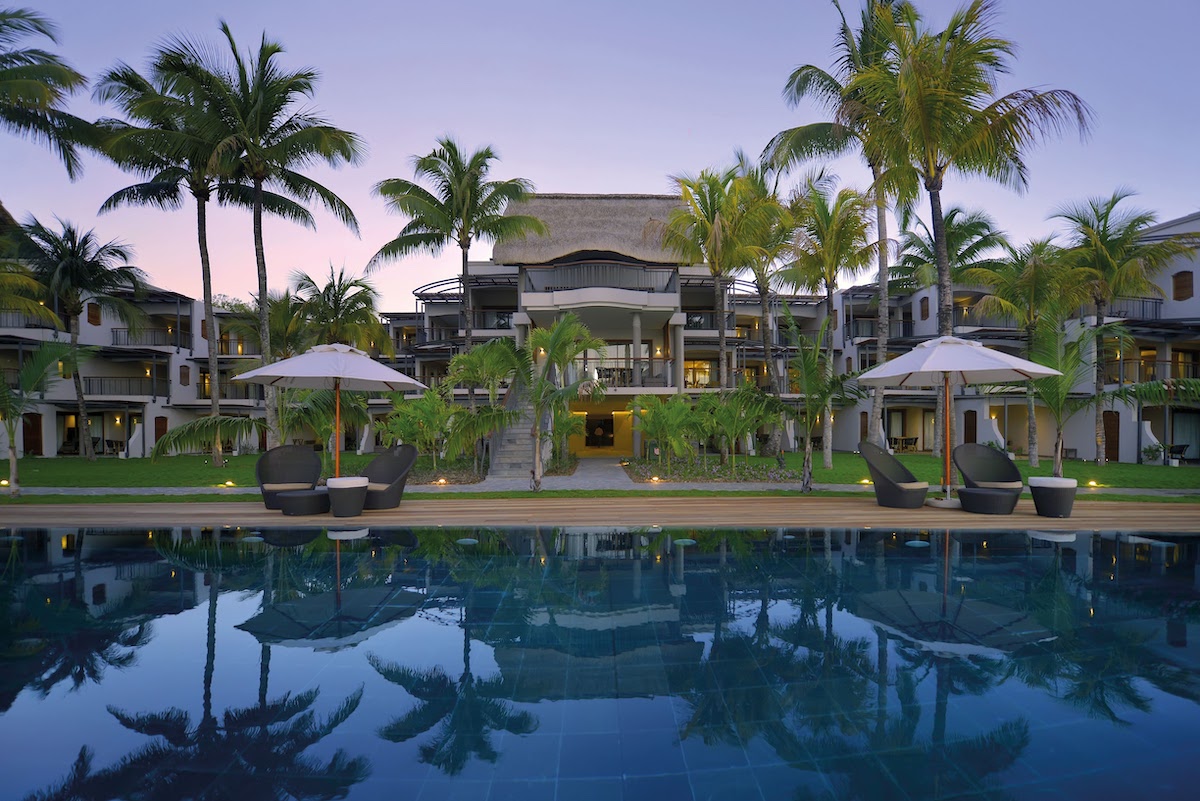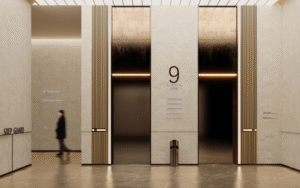Editor Hamish Kilburn was in Mauritius to explore how Beachcomber Resorts & Hotels, the island’s first luxury operator that opened its first hotel in 1952, is evolving its look and feel of its hotels without touching its precious legacy and effortless style…

Legacy can only take hotels so far in the global hospitality arena. Being the first to successfully arrive, or shelter something different, anywhere in the world will undoubtedly be answered by calls from competition. For Beachcomber Resorts & Hotels, the first luxury hotel operator to launch in Mauritius, the brand is the island – and it’s as simple as that. The question the group has had to answer in recent years is what to touch and what to preserve when renovating an heirloom.
With eight hotels in its portfolio, all dotted around the island of Mauritius, amplifying different strands of the brand’s personality and its panache, Beachcomber isn’t just a chapter from 1952 when it arrived in the island’s hospitality narrative; it is a consistent motif weaved into more than seven decades of hospitality plot twists as new hotel brands make their character debuts.

An Ocean Suite at Royal Palm. | Image credit: Beachcomber Resorts & Hotels
What is arguably most interesting about Beachcomber’s hotels, and therefore the group’s DNA, is how the unapologetic differences between each property have been celebrated. Take Royal Palm for example, in the North overlooking Grand Baie. It’s a hotel that radiates a calm, unruffled luxury that has, over decades, become famous for its naturally delivered, exclusive first-class service.
Today, the 73-key hotel is an icon, recognised and cherished by regular guests. The challenge for grand dames like this is how to develop so that it is suitable and appealing for multi-generations. Its answer is to welcome a savvy, no-nonsense General Manager who has 25 years’ experience, leading hotels such as Peninsula Paris and Hotel Lutetia. Cue the arrival of Isabelle Bouvier, who since 2021 has been refreshing Royal Palm with a touch of punctuated Parisian class; her style is indefinable, elusive and infectious.

Image caption: Poolside at Royal Palm. | Image credit: Beachcomber Resorts & Hotels
Having this many hotels lodged together in such close proximity requires points of differences – the location, design style and overall offering – no one property is the same, or even remotely similar. Like siblings growing up, the brand has been a guardian in championing moments and achievements when its hotels have been able to show their raw characteristics.
Royal Palm, if you like, is the older sister – largely following the rules and retaining its position as the luxury address, gracefully fit for royalty, in Mauritius. But, as well as offering sumptuous suites and private beaches, the hotel is not without its quirks. Socially driven, the team decided to stage a series of avant-garde photoshoots with their staff. The black-and-white photos that hang around the hotel’s corridors, taken by French photographer Eric Cullivier, accurately show the heart and energy of hospitality at Royal Palm – they are a series of scenes, referencing in-between moments, that elegantly challenge formality. For example, there is a photograph of the housekeeping team having a pillow fight in a suite, or a butler being wheeled around the hotel on a baggage trolley. The collection more than highlights, it radiates, through the power of art and creativity, a human-centric approach, subtly breaking a boundary between hotel and guest, that everyone can relate to.

Image caption: Exterior of Royal Palm. | Image credit: Beachcomber Resorts & Hotels
Move up the family tree of Beachcomber, and you will start to discover that there is something for every traveller. Each hotel, built on the same moral foundations, has its own charm, and utilises a different design direction that answers to architecture and local community.
For Jean Louis Pimot, the group’s Chief Operating Officer, who arrived on the island in 1997 and proudly never left, growing first a General Manager and working his way into his COO role, ensuring each property is threaded together through brand values has been a key element of its success and growth. “There’s an authenticity with what we are about,” he said. “We are not bling. Nothing is overstated, which I also think is true for Mauritius itself. It’s a very special place, made what it is by the people.”

Image caption: Club House at Paradis Golf Resort & Spa
There is a craft to Beachcomber that is shared by each property, which is exemplified through its social responsibility. In 2006, the group launched Beautiful Localhands, an initiative that helps local hand-craft creatives by giving them the opportunity to develop their skills and sell their products to the tourist market. Not only this, the signs and details in each room and throughout the hotel come from the same programme, which promotes local technique and helps maintain its cultural heritage by doing good. In addition, to confront single-use plastics, the biodegradable water bottles have been made from sugarcane leaves – they can even be planted after use.
“Beachcomber, by far, is the most historical group of hotels on the island,” Pimot continued. “We really believe we provide the best hospitality that the island has to offer. However, that is a treasure as much it is a challenge when it comes to renovating and evolving.”
Separated from Royal Palm by 50 miles of lush rainforest and spectacular cascading waterfalls, on the southwestern tip of Mauritius is where you will find Dinarobin Beachcomber Golf Resort and Paradis Beachcomber Golf Resort. Don’t allow their shared location to fool you. These hotels have contrasting personalities, strengths and, indeed, weaknesses. Together, connected by a smooth golf-buggy transfer initiative – guests for both hotels can travel freely between each property – they form a resilient hospitality experience that is unmatched. All of a sudden, limitations of one hotel on its own are erased with the support of the other.

Image caption: An arial view looking down at Dinarobin Golf Resort & Spa. Image credit: Beachcomber Resorts & Hotels
Think of Dinarobin and Paradis like the younger, at times, more rebellious siblings of Royal Palm. While they may not share the same hobbies or interests, they have learned the art of sharing. These hotels, fuelled by adventure, rest on sandy beaches at the foot of the island’s most famous mountain, Le Mourne.
While Dinarobin amplifies a rustic-chic approach to luxury, Paradis, on the contrary, boasts a contemporary design scheme. throughout. Both have many layers in their architecture and design narratives, but examples of architecture’s role in hotel design arguably peek at Dinarobin.
Beyond the surface of a beachside hotel is a rare and unexpected jewel – the spa. Instead of framing somewhat conventional, and expected, tranquil views that stretch across the water, the spa at Dinarobin confidently confronts, not just faces, Le Mourne. It was here, craning my neck up in the private pool, where the scale and presence of the mountain – and the hotel’s genuine sense of place – was felt most. The result is a wellness area that fluently feels almost detached from the rest of the hotel, allowing guests to feel wrapped in nature.
Meanwhile, Paradis celebrates luxury through movement. Complete with an 18-hole golf course, three miles of uninterrupted beach and a plethora of watersport activities, the 293-key hotel, with eight different F&B options, is perfectly suited for guests of all ages seeking an elevated hospitality experience. And it is here where the brand’s latest design project is being developed with care.
Following modern traveller demands and identifying long trends, Paradis is transforming its premium restaurant, Blue Marlin, into two F&B outlets that will be connected with a central bar. “The project is long-overdue; it should have been done during the pandemic,” Pimot explained. “On average [at Paradis], guests stay for 10 days. Apart from accommodation, more people want to eat together and share moments as families. Our F&B approach, therefore, in terms of operations, must adapt to offer high-class and dynamic F&B experiences. This requires us to diversify the offering.”
Leading the design direction of the renovation is Carina Share, Director at Design Partnership, who was tasked to contextually add new layers to the F&B offering through design. “The soft curved archways and neutral colour palette aims to create an inviting yet sophisticated space to complement the a la carte food offering,” she explained.
The Zest restaurant, as it will be called, will celebrate memories, not only ‘created around the sharing of food’, as Share put, but also the memories of what the space was before. The iconic ‘Blue Marlin’ fish, for example, that hung on the walls of the existing restaurant will be deconstructed and made into an art installation.
The restaurant will fade from formal and become more reclined and connected to its environment – think linen trousers over pressed chinos. “The space is all about sharing, togetherness and celebrating a laidback environment,” added the designer. “Aesthetic inspiration is taken from the Mediterranean that also inspired the cuisine.”

Image caption: Dinarobin is a hotel that is enveloped around nature. | Image credit: Beachcomber Resorts & Hotels
The bar, meanwhile, acts as a central arrival experience between the two restaurants, creating a better orientation point. “Paradis is a well-known property,” said Pimot. “Therefore, it is extremely emotional to touch certain areas of the hotel, but we need to modernise and be up-to-date with technology.”
What I believe is most praiseworthy in the development of Beachcomber Resorts & Hotels is that it fully understands its position on the global hospitality map. Where other groups have taken the ingredients of a successful hotel location and spread their wings to open in new territories, Beachcomber has done everything to preserve its integrity – to stay true to its legacy and ethos, Beachcomber belongs in Mauritius, and it would suggest Mauritius only. By retaining its local rational, the group is protected to adjust, not drastically change, its look and feel to accommodate for new generations of luxury travellers while also remaining distinctly Mauritian in its manner.
Main image credit: Beachcomber Resorts & Hotels






















